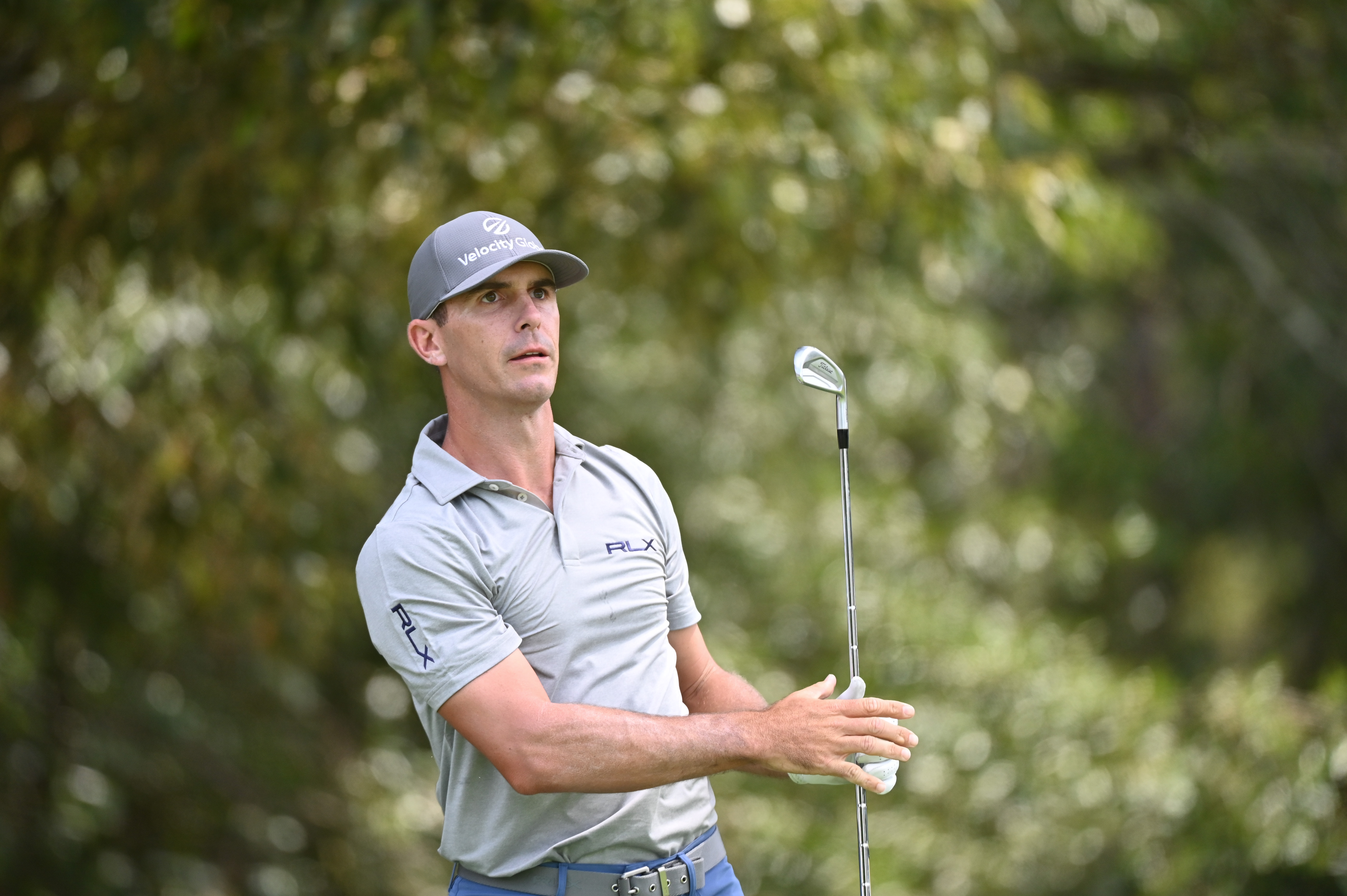A homily popular among PGA Tour members is that they eat only what they kill, and that unlike other athletes they must perform to get paid. It’s never actually been true, at least for the top players—sponsors incentivize excellence, but they don’t withhold payment for missed cuts—and certainly not in this era of the Player Impact Program and the coming guaranteed money events, both of which will compensate regardless of on-course results.
Professional golf is a club whose members can feast on past glories long after they’ve started cashing social security checks. That’s why the PGA Tour Champions exists. It’s an honorarium masquerading as competition. Only the middle and lower ranks of PGA Tour players subsist on what they butcher with birdies. And yet there are some who would see those guys go hungrier still.
Billy Horschel was asked this week how the PGA Tour can adapt to face a threat posed by the Saudi-backed Super Golf League, which has promised guaranteed riches to top-tier players. He suggested reducing the number of fully-exempt players each season from 125 to 100 and scaling back the graduates from the Korn Ferry Tour. The result, Horschel believes, would be a more competitive circuit.
“Guys aren’t sort of just happy finishing 90th on the PGA Tour every year and collecting a million-plus dollars, and that they’re actually striving to be the best players on the PGA Tour,” he offered. “If we would change the way the money pays out where the top 30, 40 guys get paid a lot of money and then you don’t get paid as much down below, so it really pushes guys to really do everything they can to be the best player that they can be.”
Horschel stressed his opposition to what he termed “handouts.”
“We reward for top play, for playing great golf, not for mediocrity,” he said.
Leaving aside Horschel’s allegory for the nation—those who want the top to get richer reflexively look at what might be snatched from those at the bottom—his comments point to a fundamental hurdle the PGA Tour faces as it fends off the Saudis: a member-led organization is constitutionally disinclined to put the squeeze on its own.
The Tour has two basic responsibilities: create playing opportunities for its members and deliver the best fields possible for its sponsors. It has more leeway to engineer the former than to guarantee the latter. Any reduction in exempt membership directly impacts the quality of the 40-odd fields it must deliver annually. Especially when stars stay home and the result is a glorified member-guest, as we witnessed in Bermuda last month. So the Tour understands what Horschel misses, that any strategy to better compensate top performers can’t come at the expense of the rank and file. The PGA Tour doesn’t do trickle-up economics.
Horschel’s charge that the PGA Tour is rewarding mediocrity is not new or shocking. The reality is that the Tour has always done so. The only thing that has changed is how handsomely mediocrity pays.
Aside from a minor tweak two years ago, the same formula has determined the distribution of prize money since 1983: 79% of a tournament’s purse goes to the top 20 finishers; the winner gets 18%; those who make the cut but finish close to last take home roughly 0.2%. Curtis Strange was the first to crack the million-dollar barrier for a season’s prize money, in 1988. In the 2020-2021 season, 124 players earned at least $1 million, excluding bonuses. The average prize money earned in ’88 was equivalent to around $260,000 today. The ’20-’21 average (again, excluding bonuses) was $1,485,055.
I texted Strange to ask what he might have said had he been told in ’88 that his $1 million would someday only be good for 124th place on the money list. His wry response: “Play better!”
The player who claimed the 124th and final spot aboard the Tour’s millionaires yacht last season was Tyler McCumber. The world No. 376 earned $1,025,909 thanks to finishing second in the Dominican Republic and tied for sixth a week later at the Sanderson Farms Championship. His other 23 starts saw zero top 10s and 15 missed cuts. Let’s be clear: McCumber’s haul was no “handout.” He earned every cent. But those figures explain why people like Horschel—who cleared just over $4 million for a season in which he won a World Golf Championship and finished runner-up in another—think some players receive too much for too little.
It’s often impossible to tell where mediocrity ends and struggles begin, be they physical, mental or personal. One can’t assume that everyone who finishes well down the FedEx Cup standings just isn’t working hard enough. But Horschel does have a valid point.
Perhaps the PGA Tour product would be improved by having fewer exempt players with guaranteed spots and more Monday qualifiers, through which guys earn their way to the first tee Thursday. But that isn’t going to happen anytime soon. The four players who sit on the Tour’s board of directors and the 16 who comprise the Players Advisory Council are drawn from every strata of the membership. Sitting next to Justin Thomas and Jon Rahm are Johnson Wagner and Peter Malnati. Who among them is likely to vote to adversely impact themselves or someone they have to see in the locker room every week?
The dilemma facing the Tour is not how to reduce the ranks or earnings of lesser mortals, but how to ensure greater rewards for those who move the needle—a fluid group, but not so fluid as to include Horschel, which inoculates him against any charge of self-interest in his public stance. Other than awarding bonuses that are not dictated by scores, there are only two actions open to the PGA Tour: create guaranteed money tournaments for elite fields, and boost the purses in the existing events that draw the stars. Rewarding the needle-movers does not have to mean sticking it to the rank and file.

